This article was co-authored by Joshua Grahlman, PT, DPT, FAFS. Dr. Joshua Grahlman, PT, DPT, FAFS, is the Founder and Chief Athlete Mechanic of Clutch PT + Performance, a private physical therapy clinic specializing in sports and orthopedics in New York City. With more than a decade of experience, Dr. Grahlman specializes in treating acute and chronic pain and injuries, sports performance optimization and post-operative rehabilitation. Dr. Grahlman earned his Doctorate of Physical Therapy (DPT) from Columbia University College of Physicians and Surgeons. He is one of just a few DPTs in New York City recognized as a Fellow in Applied Functional Science through the Gray Institute for Functional Transformation (GIFT). He is certified in Active Release Technique and Spinal Manipulation and is a TRX Suspension Training Specialist. Dr. Grahlman has spent his career treating athletes of all levels, from Ironman Champions and Olympians to marathoner moms. He consults for Triathlete, Men’s Health, My Fitness Pal and CBS News.
There are 11 references cited in this article, which can be found at the bottom of the page.
This article has been viewed 88,807 times.
Carpal tunnel syndrome occurs when there is a pinch or pressure on the median nerve located between the palm of the hand and the forearm. This can cause inflammation, pain, numbness, and tingling, as well as a feeling of pressure in the fingers, wrist, and arm.[1] There are numerous reasons why someone would develop this syndrome, such as underlying health conditions, overuse of the wrist, injury to the area, or the anatomy of your wrist. By diagnosing and treating the syndrome, a person can reduce the symptoms.[2]
Steps
Diagnosing Carpal Tunnel Syndrome at Home
-
1Assess your risk factors for carpal tunnel syndrome. Assessing your risk factors can put you in a better position to understand the symptoms, to recognize the condition and to better treat it. Assess if you have one or more of the following risk factors:[3]
- Gender and age: women tend to develop carpal tunnel syndrome more than men and it is most frequently diagnosed between the ages of 30 and 60.
- Occupation: having a job that requires a lot of use of your hands, such as factory or assembly line work, puts you at a greater risk for the syndrome.
- Underlying conditions: those with metabolic disorders, rheumatoid arthritis, menopause, obesity, thyroid disorders, kidney failure, or diabetes have a greater chance at developing the condition.
- Lifestyle factors: smoking, high salt intake, sedentary lifestyle may increase your risk of carpal tunnel syndrome
-
2Recognize the symptoms. If you notice any of the following five symptoms in your wrist, hand, or arm, you might be developing or already suffering from carpal tunnel syndrome:[4]
- Tingling in the hand, fingers or wrist.
- Numbness in the hand, fingers or wrist.
- Swelling in the wrist.
- Pain in the hand, fingers or wrist.[5]
- Weakness of the hand.
Advertisement -
3Keep track of your symptoms. Keeping track of your symptoms can put you in a better position to diagnose and treat the condition, should you have it. Your doctor can also diagnose the condition better if he/she has a more detailed history of the condition.[6]
- Symptoms generally show up gradually.
- Symptoms often first appear during the night. As the condition worsens, you’ll start to feel the symptoms during the day.
- Symptoms that do not go away with time (unlike in the case of a temporary injury) and gradually become worse as time moves forward.
-
4Try the Phalen's Test. This is an easy test that can be used in the diagnosis of carpal tunnel syndrome. There are several ways to test this. Try the following:[7]
- Sit at a table and place your elbows on the table.
- Let your wrist fall to maximal flexion to increase the pressure in the carpal tunnel.
- Hold this position for at least one minute.
- Another way to do the test is to place the backs of both hands together in front of you, pointing fingers down (like an opposite prayer position).
- Any pain and tingling of hands, fingers and/or wrist and numbness in the fingers, specifically, at the height of thumb, forefinger, and a part of the middle finger, are positive results.
-
5Try the other carpal tunnel tests. Several tests for diagnosing carpal tunnel have been described but the specificity of these tests is questionable. You may still try them:[8]
- The Tinel’s sign is done by tapping the wrist and carpal tunnel with your fingers or a tendon hammer. If it causes tingling in the fingers, it is believed to be a positive test.
- The Tourniquet test is based on temporarily increasing the carpal tunnel pressure by applying a blood pressure cuff to the upper arm or forearm. Inflate the cuff between systolic and diastolic pressure to obstruct venous return from the arm and increasing blood volume in the hand. If this causes symptoms, the test is positive. However, don't perform this test unless you are comfortable using a blood pressure cuff correctly.
- The hand elevation test is done by elevating the hands above the head for two minutes. If this causes symptoms, then the test is positive.
- The Durkan’s carpal compression test relies upon direct pressure applied over the carpal tunnel to increase the pressure. Press the carpal tunnel with your thumb or ask a friend to do this. If this causes symptoms, the test is positive.[9]
-
6Ask yourself if you should see a doctor. If the symptoms become worse or don't go away, the pain is unbearable, or you’re having a hard time keeping up at work, consult your doctor.[10] Your doctor can diagnose and treat the symptoms appropriately and exclude any serious, underlying conditions.
Diagnosing Carpal Tunnel Syndrome at the Physician’s Office
-
1Tell your symptoms to your doctor. Speaking with your healthcare provider means letting them know more about the symptoms that you’re experiencing as well as the condition history.[11]
- Remember, your doctor can diagnose the condition better if you’re detailed and do not leave any symptoms out.
- Be aware that your doctor may refer you to a specialist in neurology, surgery, orthopedics, or rheumatology, if needed for diagnosis or treatment.
-
2Get a physical examination. Your physician will want to assess your wrist and hand. They will press on points to find out if there is any pain or numbness in the area. They will also check for swelling, sensation, and weakness. If the pain is intense, additional tests may be needed to rule out other health conditions.[12]
- A pre-assessment where they look over the area visually is required to give indication and direction for further tests.
- Your doctor may also perform Phalen's test or other carpal tunnel tests in the office.
-
3Get a blood test. Blood samples may be requested to rule out additional medical issues, such as rheumatoid arthritis, a thyroid issue, or other underlying medical problems. By ruling out these problems, your physician can better diagnose the problem.[13]
- Once blood tests rule out other medical problems, additional imaging tests may be needed.
-
4Ask for an imaging test. Imaging tests, such as an X-ray or ultrasound, may be requested by the physician or you can request them yourself. By having these imaging scans performed, you can be in a better position to diagnose the problem and treat the symptoms.[14]
- X-ray is usually used only to aid in the diagnosis or rule out other causes of pain (such as fractures and arthritis).
- Your doctor may use ultrasound to visualize the structure of the median nerve in your hand.
-
5Get an electromyogram. An electromyogram is a test during which multiple fine needles are inserted into the muscles to measure electrical discharges. This test can determine if there is muscle damage and it can rule out other conditions.[15]
- A mild painkiller can be administered prior to the test to reduce pain.
-
6Ask for a nerve conduction study. This medical conductivity test is used to detect how the nervous system is functioning and can determine whether or not you have carpal tunnel syndrome.[16]
- During the test, two electrodes are placed on your hand and wrist and a small shock is passed through the median nerve to detect if electrical impulses are slowed in the carpal tunnel.
- The results can indicate how much damage has occurred to your nerves.
Expert Q&A
Did you know you can get expert answers for this article?
Unlock expert answers by supporting wikiHow
-
QuestionWhat does carpal tunnel pain feel like?
 Joshua Grahlman, PT, DPT, FAFSDr. Joshua Grahlman, PT, DPT, FAFS, is the Founder and Chief Athlete Mechanic of Clutch PT + Performance, a private physical therapy clinic specializing in sports and orthopedics in New York City. With more than a decade of experience, Dr. Grahlman specializes in treating acute and chronic pain and injuries, sports performance optimization and post-operative rehabilitation. Dr. Grahlman earned his Doctorate of Physical Therapy (DPT) from Columbia University College of Physicians and Surgeons. He is one of just a few DPTs in New York City recognized as a Fellow in Applied Functional Science through the Gray Institute for Functional Transformation (GIFT). He is certified in Active Release Technique and Spinal Manipulation and is a TRX Suspension Training Specialist. Dr. Grahlman has spent his career treating athletes of all levels, from Ironman Champions and Olympians to marathoner moms. He consults for Triathlete, Men’s Health, My Fitness Pal and CBS News.
Joshua Grahlman, PT, DPT, FAFSDr. Joshua Grahlman, PT, DPT, FAFS, is the Founder and Chief Athlete Mechanic of Clutch PT + Performance, a private physical therapy clinic specializing in sports and orthopedics in New York City. With more than a decade of experience, Dr. Grahlman specializes in treating acute and chronic pain and injuries, sports performance optimization and post-operative rehabilitation. Dr. Grahlman earned his Doctorate of Physical Therapy (DPT) from Columbia University College of Physicians and Surgeons. He is one of just a few DPTs in New York City recognized as a Fellow in Applied Functional Science through the Gray Institute for Functional Transformation (GIFT). He is certified in Active Release Technique and Spinal Manipulation and is a TRX Suspension Training Specialist. Dr. Grahlman has spent his career treating athletes of all levels, from Ironman Champions and Olympians to marathoner moms. He consults for Triathlete, Men’s Health, My Fitness Pal and CBS News.
Physical Therapist & Entrepreneur
References
- ↑ Joshua Grahlman, PT, DPT, FAFS. Physical Therapist & Entrepreneur. Expert Interview. 8 September 2020.
- ↑ https://orthoinfo.aaos.org/en/diseases--conditions/carpal-tunnel-syndrome/
- ↑ https://my.clevelandclinic.org/health/diseases/4005-carpal-tunnel-syndrome
- ↑ https://my.clevelandclinic.org/health/diseases/4005-carpal-tunnel-syndrome
- ↑ Joshua Grahlman, PT, DPT, FAFS. Physical Therapist & Entrepreneur. Expert Interview. 8 September 2020.
- ↑ https://www.ninds.nih.gov/Disorders/Patient-Caregiver-Education/Fact-Sheets/Carpal-Tunnel-Syndrome-Fact-Sheet
- ↑ https://www.uptodate.com/contents/image?imageKey=RHEUM%2F68440&topicKey=NEURO%2F5288&source=see_link
- ↑ https://www.aafp.org/afp/2016/1215/p993.html
- ↑ https://www.jhsgo.org/article/S2589-5141(20)30018-9/pdf
- ↑ Joshua Grahlman, PT, DPT, FAFS. Physical Therapist & Entrepreneur. Expert Interview. 8 September 2020.
- ↑ https://orthoinfo.aaos.org/en/diseases--conditions/carpal-tunnel-syndrome/
- ↑ https://emedicine.medscape.com/article/327330-clinical#b4
- ↑ https://www.health.harvard.edu/pain/carpal-tunnel-syndrome
- ↑ https://stanfordhealthcare.org/medical-conditions/bones-joints-and-muscles/carpal-tunnel-syndrome/diagnosis.html
- ↑ https://orthoinfo.aaos.org/en/diseases--conditions/carpal-tunnel-syndrome/
- ↑ https://www.hopkinsmedicine.org/health/treatment-tests-and-therapies/nerve-conduction-studies
About This Article
To diagnose carpal tunnel syndrome, look for common symptoms, like tingling or numbness in your hand, fingers, or wrist, as well as pain and swelling. Also, keep in mind that you're at a higher risk of developing carpal tunnel syndrome if you're over the age of 30 and you have a job that requires the frequent use of your hands. If you think you might have carpal tunnel syndrome, or if your symptoms are becoming worse, talk to your doctor so they can diagnose you and help you come up with a treatment plan. To learn how to test yourself at home for carpal tunnel syndrome, keep reading!



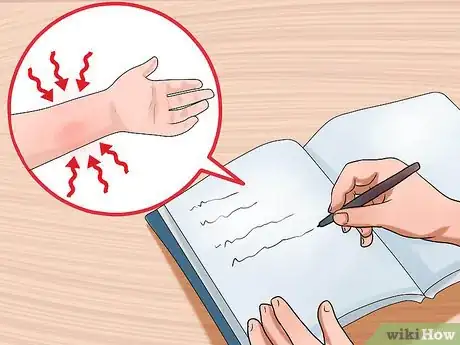




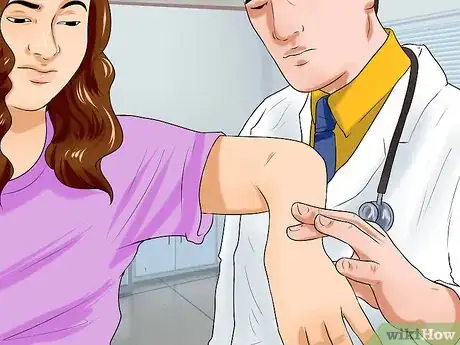
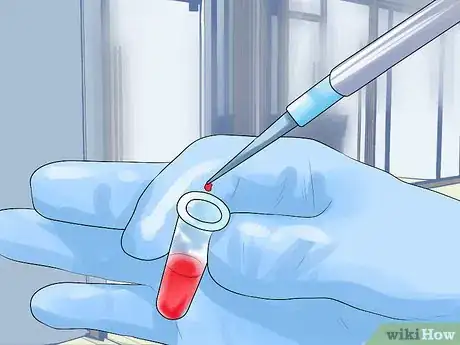
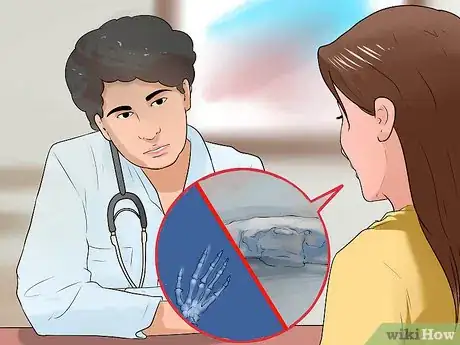
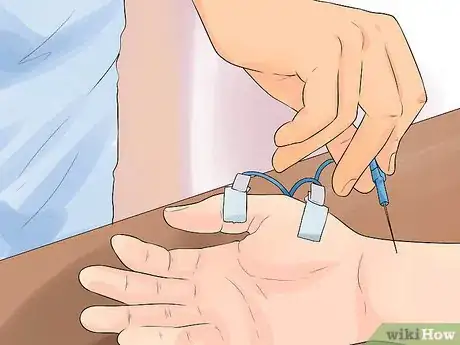
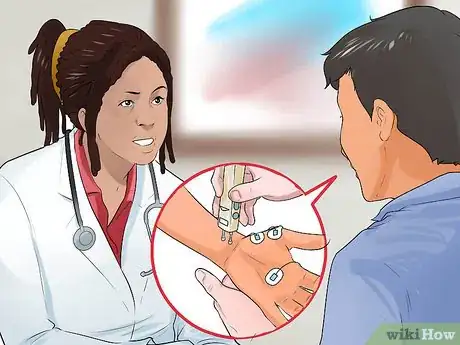


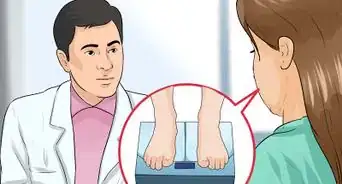


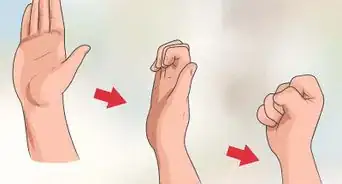














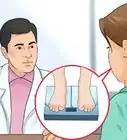




































Medical Disclaimer
The content of this article is not intended to be a substitute for professional medical advice, examination, diagnosis, or treatment. You should always contact your doctor or other qualified healthcare professional before starting, changing, or stopping any kind of health treatment.
Read More...